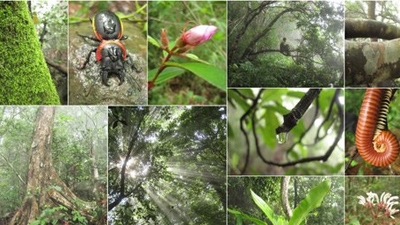Overview
The Nam Theun 2 Watershed is comprised of the Nakai Nam Theun National Protected Area (NNT NPA) and two corridors adjacent to other protected areas. It is approximately 4000km2.
NNT NPA is the largest of Laos’ 23 National Protected Areas and is an important protected inland area in Asia that is marked for conservation.
The government is supporting conservation
The NT2 Watershed has been recognized for its unique natural diversity and the government of Lao PDR is applying for the site to be given UNESCO World Heritage status. The Office of the Prime Minister created the Nam Theun 2 Watershed Management and Protection Authority (WMPA) to manage conservation efforts in the area. The Nam Theun 2 Power Company is supporting WMPA with funding (US$1 million annually for 25 years after commercial operations start) and technical management. In turn, the Nam Theun 2 Project has committed to financing the NT2 Watershed protection program for 30 years.
Managing the Nakai Nam Theun National Protected Area
The government’s Social and Environment Management Framework and Operation Plan (SEMFOP1) describes how NNT NPA /NT2 Watershed is being managed. The first management plan was released in January 2005 and a second one is expected to be released in the near future. SEMFOP isn’t only an operational plan but is also a broader strategic framework used to guide efforts to balance conservation and livelihood development activities. Its key objective is to ensure long-term protection of the biodiversity and watershed values of the Nam Theun 2 catchment (the area where water collects and drains) and, at the same time, safeguard the well-being and traditional livelihoods of the people who live there.
The management of the area is based on the integration of conservation objective with development activities. This means that certain parts are being zoned as completely protected area while other areas are authorized to be used for agriculture or other developments by enclave villagers. In addition, villagers in and surrounding the NPA are encouraged to fully participate in managing the area so that their livelihood- mainly farming- is in balance with the surrounding nature. WMPA works with the local authority and communities through programs which will protect the Watershed. These programs include: forest and land use planning, law enforcement, biodiversity resource surveys, village livelihood and social development.
There are more than 6,000 people living within the Nakai Nam Theun National Protected Area (NNT NPA). One of the most vulnerable groups in the NT2 Watershed area is the Vietic ethnic group. Traditionally, they are foraging nomads who live in small communities. Some groups practice shifting cultivation and move every two to three years. To protect the NNT NPA, the government plans to halt this (because it often has a negative impact on the ecosystem) and help people in the area attain new, sustainable livelihoods.
Wildlife programs
International organizations, such as the Wildlife Conservation Society, shared expertise in designing protection and conservation programs. The programs included wildlife rescue (during the Nakai Reservoir creation and inundation), elephant management, creation of artificial wetlands, patrolling and enforcement, and increasing public awareness.
The wildlife rescue program was completed in February 2009 but the monitoring of released wildlife continues in the Watershed area. There are significant numbers of rare and recently discovered species endemic to the area. Animals that have never been studied by scientists- such as the Large Antlered Muntijac, a rare type of deer- have been rescued and transferred to the NNT NPA. However, significant challenges remain because of threats like wildlife poaching and illegal acquisition of the Watershed’s timber and potential mineral resources. There is a danger of these threats causing negative social and environmental impacts so long-term commitment from communities and partners on a broad scale is required.

